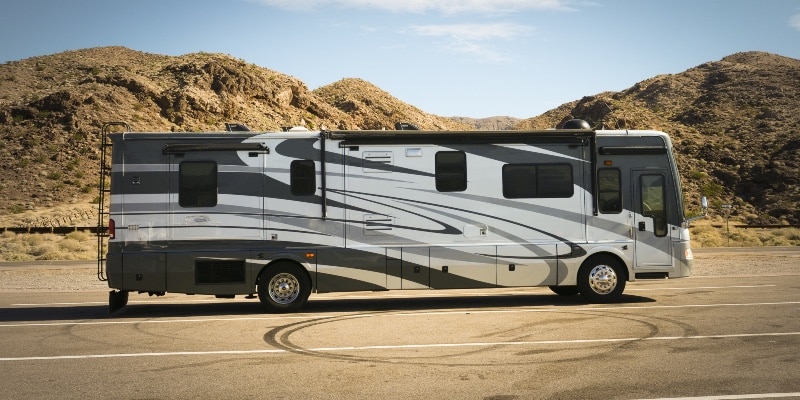Over the past several months, health organizations have ramped up efforts to accelerate COVID vaccinations, particularly in underserved communities. Organizers are paying special attention to the elderly, bedridden, homeless, and communities of color, with the understanding that these communities are both at higher risk for COVID and less likely to get vaccinated.
To reach at-risk patient populations, mobile vaccination clinics are springing up across the country. For example, several such clinics exist in California, with some setting up shop at places of worship and others driving to the homes of bedridden patients and through communities of those experiencing homelessness.
Mobile vaccination clinics are just one example of mobile health clinics (MHCs), a model that’s existed for several years. Given their focus on reaching medically underserved patients, MHCs could prove disruptive to traditional care, making healthcare far more affordable and accessible for all.
Healthcare on wheels
A mobile health clinic is a basic physician’s office made compact, consisting of a large van, bus, or RV outfitted with basic exam room equipment. MHCs typically travel to medically underserved areas, seeking to address patients who have limited to no access to care. These clinics mainly offer preventative care services, such as screenings and vaccinations, as well as basic primary care, dental care, and chronic disease management.
This is not a novel idea for care delivery. MHCs have existed for decades, with more than 2,000 currently operating in the US. The majority of MHCs are either independently run non-profits, or partnered with existing hospital centers, with many funded through grants, donations, and federal funds.
The mobile clinic as a disruptive solution
Contrary to popular opinion, Disruptive Innovations don’t upend industry leaders and transform industries due to high-end “tech”; in fact, a hallmark of a Disruptive Innovation is providing a simple product or service that is less expensive and more accessible than established offerings, while typically being considered “not as good” at the start. Mobile health clinics do just that, while targeting patients who often go without care altogether.
Because mobile clinics primarily target uninsured and underinsured patients, clinics tend to provide care for either no cost or on a sliding-scale fee basis, making care significantly more affordable for patients than traditional in-person care. Clinics are also designed with access in mind. They’re typically staffed with culturally competent community health workers, helping to overcome linguistic and cultural barriers; and their maneuverability allows providers to offer care in a more comforting, community setting, appealing to those who may otherwise feel discomfort or distrust.
As is expected with potentially disruptive solutions, MHCs come with their limitations. Because the size of a van, bus, or RV is limited, MHCs can’t hold the same amount of equipment as traditional, brick-and-mortar health clinics. The majority of these clinics are limited to using portable instruments, which often face performance issues not seen in their stationary counterparts. They are also susceptible to the same troubles as any other vehicle—breakdowns, maintenance costs, trouble traveling in extreme weather, and the general cost of an aging automobile. This can make operating an MHC costly for funders and health partners, especially as time goes on.
Despite the challenges and limitations facing MHCs, their operation provides a significant benefit to people across the country. The presence of an MHC in a community is shown to decrease ER utilization and healthcare system costs, as well as lower readmission rates, which is important since ERs are often misused for non-emergent care. Because MHCs are designed to manage and overcome traditional barriers to healthcare, they can initiate care planning and teach patients to self-manage their health status, intervening in patient care before their health status gets too severe.
The flexibility of mobile clinics also allows them to handle health emergencies that require a quick and fluid response, with COVID being the perfect example: at the advent of the pandemic, many MHCs pivoted to providing COVID tests, and now are providing vaccinations. Mobile clinics were also able to quickly organize and travel to Flint, MI during the height of the Flint water crisis, to provide much-needed medical care to children.
While Disruptive Innovations gain a foothold by serving populations that have traditionally been overserved or neglected, industry transformation doesn’t happen until they begin their climb upmarket and gradually steal market share from incumbents (in this case, traditional, brick-and-mortar providers). In the case of MHCs, their ability to move upmarket hinges on the improvement and reduction in cost of medical and vehicle technology, as well as generator capacity. As portable medical tech reaches higher and higher performance levels, mobile clinics will be able to provide more services with greater accuracy. And as vehicular technology improves, maintenance costs may no longer get in the way of providing care.
If mobile vaccination efforts show anything, it’s that MHCs are an innovative and creative way to reach those who need the most attention from the healthcare system. Deploying more across the country should significantly expand access to healthcare and reduce the nation’s healthcare costs. And if technology progresses, MHCs may become a more frequent care venue for all patients.



